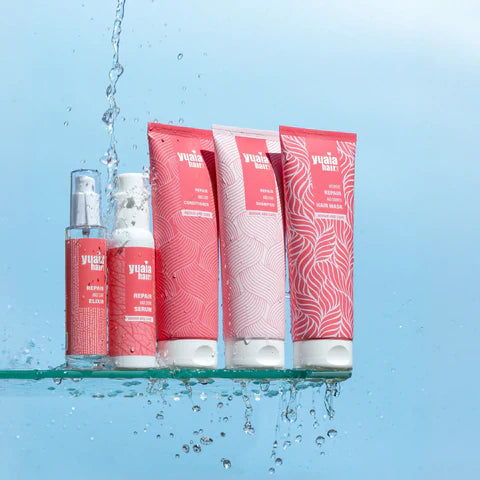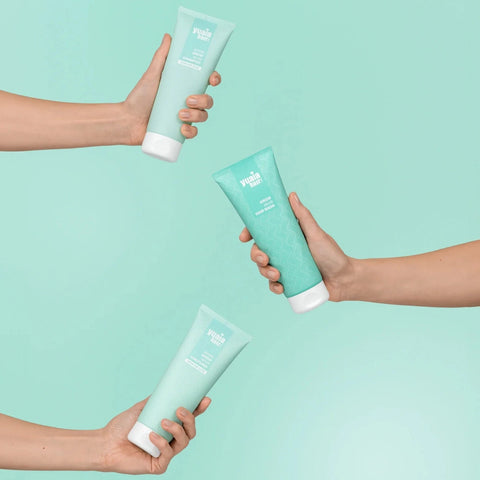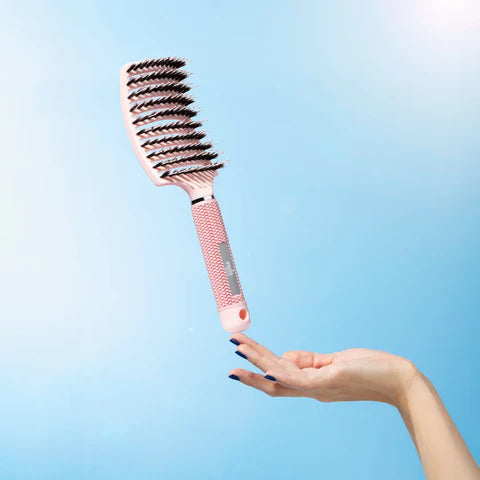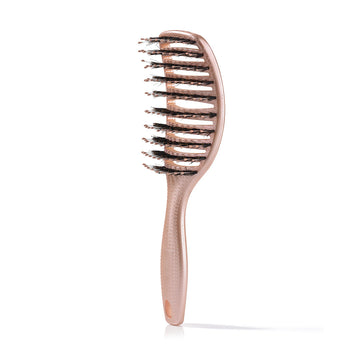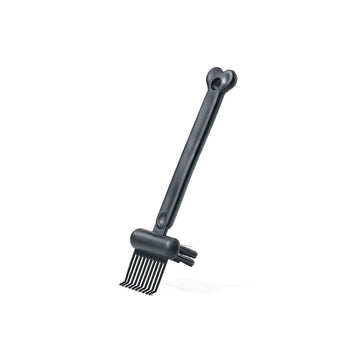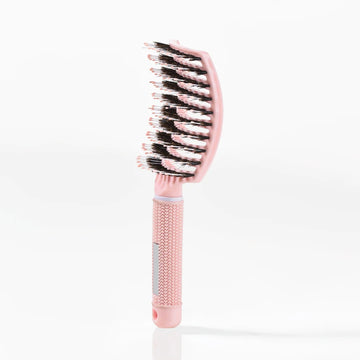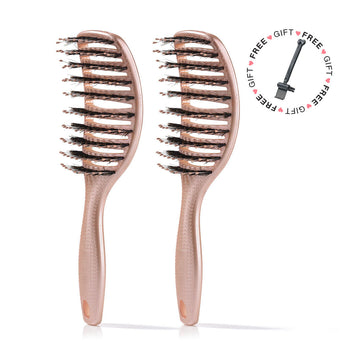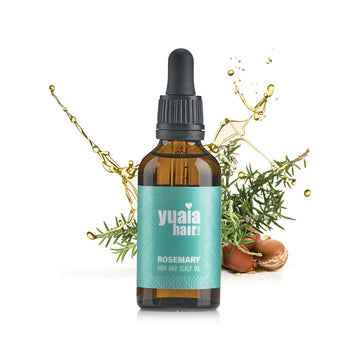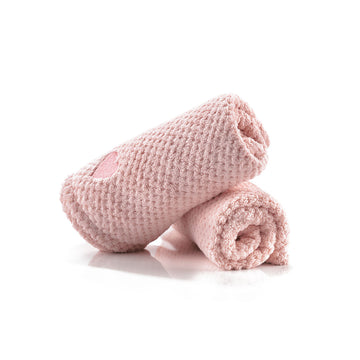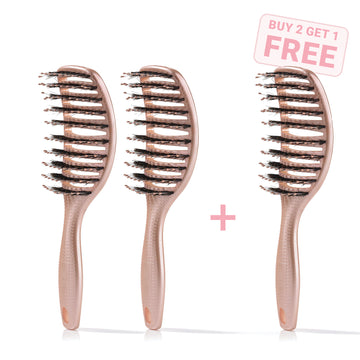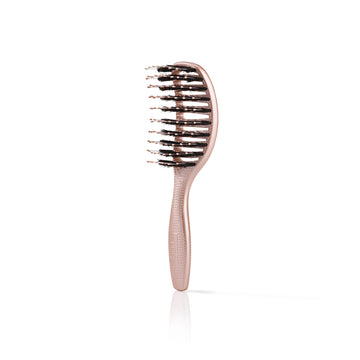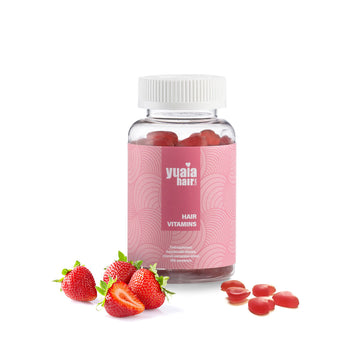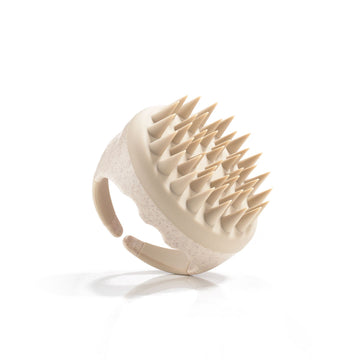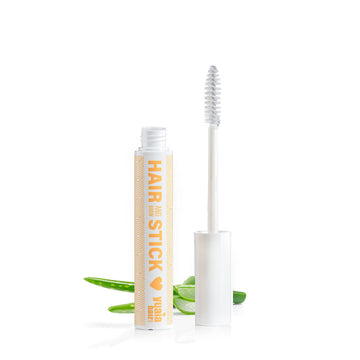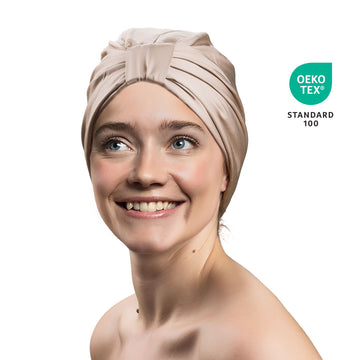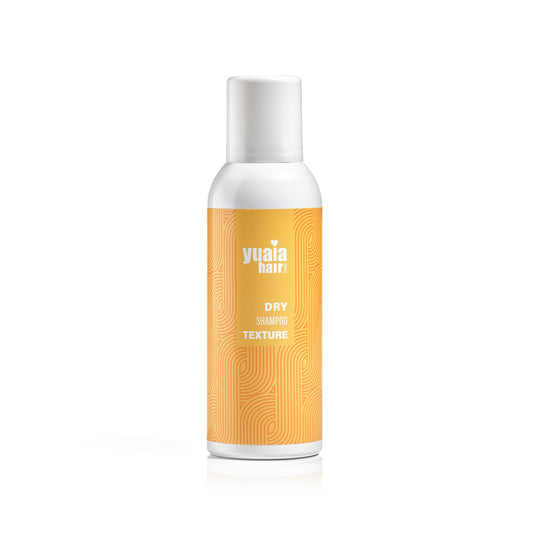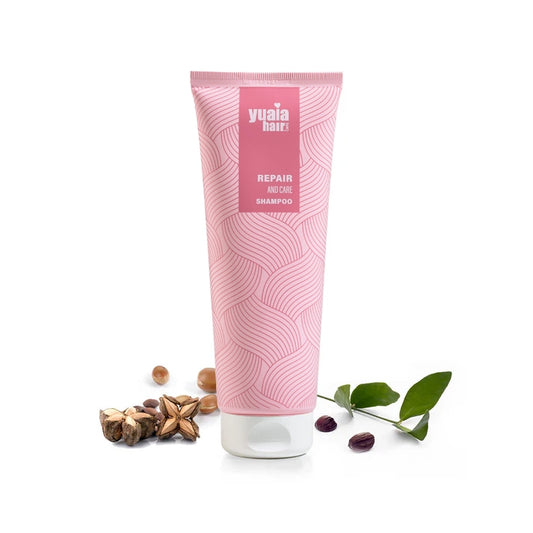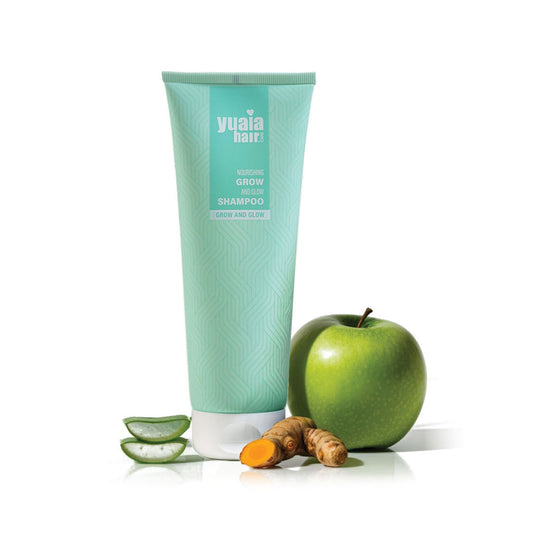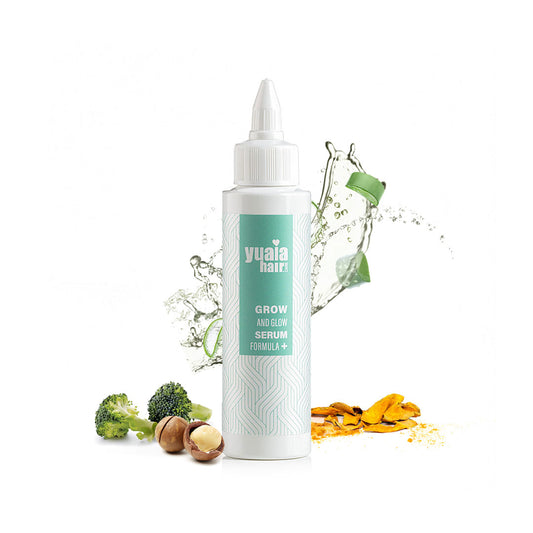
Straight hair
Recommended interval: Every 1–3 days
Straight hair tends to get oily faster because scalp oils easily travel down the hair shaft. Fine, straight hair may appear greasy within a day, while thicker strands usually last longer.
- Refreshing: Use dry shampoo to absorb oil and add light volume.
- Light styling: Choose products that won’t weigh hair down.
This routine keeps hair looking fresh and polished, even when skipping a wash.
Wavy hair
Recommended interval: Every 2–4 days
Wavy hair has a texture where natural oils help maintain a healthy balance between hydration and volume. A small amount of oil can enhance definition and add shine, but too much can weigh the hair down, leaving it flat.
- Refreshing: Use leave-in conditioners or lightweight styling creams to keep waves defined.
- Avoid heaviness: Choose products that won’t overload the hair.
This routine keeps waves fresh, nourished, and easy to style, even if you skip a wash.
Curly hair
Recommended interval: Every 4–7 days
Curly hair is naturally drier because the scalp’s natural oils move more slowly along the spiral strands. Washing too often can strip these protective oils, causing extra dryness or frizz. Less frequent washing helps preserve curl definition and softness.
- Refreshing: Use a water mist or curl cream to revive shape between washes.
- Gentle care: Avoid harsh products that dry out the hair.
This routine keeps curls nourished, hydrated, and easier to manage.
Coily hair
Coily hair has a dense spiral-shaped structure that naturally retains moisture longer than many other hair types. This means it rarely becomes oily quickly but is more prone to dryness and breakage.
- Protective styles: Help reduce breakage and preserve moisture.
Co-wash: Washing with conditioner only is a gentle method that cleanses without drying out the scalp.
This routine supports healthier hair, improved hydration, and a more balanced scalp.
Other factors to consider
- Scalp condition: Oily scalps may require more frequent washing, while dry scalps can usually go longer.
- Lifestyle: Exercise, sweating, humidity, and styling product buildup affect how often you need to wash.
- Climate changes: Moving from a dry winter to a humid summer may require adjusting your routine.
- Flexibility: Pay attention to how your hair responds and adjust intervals accordingly.
Risks and discomforts of going too long
While skipping a wash now and then can be beneficial, waiting too long has drawbacks. Hair may feel heavy and greasy, and the scalp environment can become unbalanced, increasing the risk of irritation, dandruff, or even infections as oil, sweat, and dirt build up. Feeling unclean can also affect confidence and wellbeing. By finding the right balance, you can enjoy the benefits of fewer washes without compromising scalp health.
Oil and product buildup
Oil and product buildup can clog pores and weigh hair down, sometimes leading to scalp pimples or follicle blockage that affects healthy growth. Over time, this can also interfere with proper oxygen flow to the follicles. To help avoid buildup in the first place if you want to go longer between washes, consider rinsing with water in between shampoo sessions, using lightweight leave‑in products that don’t coat the hair heavily, and applying dry shampoo to absorb excess oil. Regular gentle brushing can also help distribute oils more evenly, preventing them from pooling on the scalp.
Odor
Odor may develop as oils oxidize and trap environmental pollutants, making hair smell stale or sour even if it looks relatively clean. This can become more noticeable after physical activity or exposure to smoke and dust.
Dandruff, itchiness, or irritation
Dandruff, itchiness, or irritation can occur when yeast or bacteria thrive in the oily environment, and scratching the scalp may worsen inflammation. Persistent itching can even cause small wounds that are vulnerable to infection.
How these issues can be prevented, besides washing hair:
- Maintain scalp balance: Use lightweight products that don’t clog pores or create excess oil buildup.
- Choose gentle formulas: Shampoos and treatments free of sulfates , parabens, or harsh chemicals reduce the risk of irritation.
- Incorporate scalp care: Regular use of a scalp scrub or exfoliating tonic can help remove buildup and keep the skin healthy.
- Avoid overwashing: Cleansing too often strips natural oils, which can lead to rebound oiliness and worsen irritation.
- Support hydration: Apply a nourishing scalp oil or serum formulated to calm dryness and restore comfort.
- Monitor external triggers: Stress, diet, or seasonal changes can also play a role, so keeping track of flare-ups may help identify patterns.
Skin conditions
Skin conditions like eczema or psoriasis may flare if the scalp isn’t kept clean, with dryness and redness spreading beyond the hairline. This can create discomfort that affects overall wellbeing.
What you should do in this case:
- Gentle cleansing: Use mild, fragrance-free shampoos to avoid further irritation.
- Hydration support: Apply soothing scalp oils, serums, or medicated moisturizers formulated for sensitive skin.
- Avoid triggers: Stay away from harsh chemicals, heavy styling products, and very hot water when washing.
- Targeted treatments: Over-the-counter medicated shampoos with ingredients like zinc pyrithione, salicylic acid, or coal tar can reduce symptoms.
- Protect the skin barrier: Don’t scratch, as it can cause wounds and increase infection risk.
- Professional care: If symptoms are persistent or severe, consult a dermatologist for prescription-strength treatments or tailored guidance.
Increased tangling and matting
Increased tangling and matting can happen as oil and debris coat the hair, making it harder to detangle and more prone to breakage. In severe cases, tangling can lead to painful knots that may require trimming.
To help prevent this, focus on gentle maintenance between washes:
- Regular detangling: Use a wide-toothed comb or a detangling brush to smooth hair from the ends upward.
- Protective styles: Loose braids, buns, or twists reduce friction and keep strands from knotting.
- Moisture balance: Apply a light leave-in conditioner or detangling spray to keep hair soft and easier to manage.
- Night protection: Sleep on a silk pillowcase or wear a silk/satin bonnet to minimize friction.
These simple steps can reduce the risk of matting, keep hair manageable, and make wash day less stressful.
Loss of volume and shine
Loss of volume and shine becomes noticeable over time, as hair starts to look flat and dull rather than healthy and bouncy. Styling products also stop working effectively when buildup is present.
Potential long-term scalp imbalance
Potential long-term scalp imbalance can develop when the skin barrier is disrupted by excessive oil, sweat, or microorganisms. This can increase sensitivity, leading to an ongoing cycle of irritation and discomfort.
How to handle this, beyond just regular washing:
- Gentle cleansing: Use a sulfate-free shampoo to clean without causing further irritation.
- Balanced hydration: Include a lightweight conditioner to restore moisture and maintain scalp comfort.
- Targeted treatments: Consider scalp care products such as exfoliating scrubs or soothing tonics that remove buildup without stripping natural oils.
- Professional guidance: If the issue persists, seek advice from a dermatologist or trichologist to identify underlying causes and get tailored treatment.
Smart tips for washing less without issues
Use mild, sulfate‑free shampoos and condition regularly.
- Apply dry shampoo to absorb excess oil and add volume.
- Brush gently to distribute oils from the scalp to the ends.
- Experiment with protective hairstyles like braids or buns.
- Adjust frequency based on activity levels—wash sooner if you sweat heavily.
Quick self‑assessment
Ask yourself:
- Does my scalp feel oily or itchy ? Consider whether this sensation appears quickly after washing or only after several days, as this can indicate how often your scalp produces excess oil.
- Does my hair look limp or smell unpleasant? Hair that appears flat , lifeless, or develops odor is often signaling that it’s time for a wash.
- Do I exercise or sweat often? Physical activity can speed up oil and sweat buildup, meaning you may need to adjust your routine accordingly.
- What is my hair texture? Fine hair tends to show oil faster, while thicker or curlier textures can often go longer between washes without issues.
- Have I recently used a lot of styling products? Heavy products can coat the hair, so even if your scalp doesn’t feel oily, buildup may still require a wash.
- Do I notice changes in scalp comfort, such as tightness, itching, or flakiness? These are signs the scalp needs refreshing.
These questions can help guide how often you personally need to wash, and reviewing them regularly can make it easier to adapt your routine as seasons, activities, or products change.
Finding your perfect wash rhythm
There’s no universal answer to how long you can go without washing your hair. For some, it’s every other day; for others, it’s once a week or longer. The key is balance: Listen to your scalp, understand your hair type, and adjust as needed. A clean scalp supports healthy hair growth, but skipping a wash now and then can benefit texture and moisture. Ultimately, the best routine is the one that keeps your hair and scalp feeling comfortable and healthy.
Frequently Asked Questions
How often should I wash my hair if I exercise daily?
If you exercise daily and sweat a lot, you may need to wash your hair more frequently, such as every 1–2 days, especially if your scalp feels oily or uncomfortable. However, you can also try rinsing with water or using dry shampoo between washes to avoid over-cleansing.
Is it bad to go a week or longer without washing your hair?
Going a week or longer without washing your hair is not necessarily bad for everyone, especially for those with curly or coily hair types that are prone to dryness. However, if you notice scalp discomfort, odor, or buildup, it’s a sign you should wash sooner to maintain scalp health.
What are the signs that my hair needs to be washed?
Common signs include an oily or itchy scalp, limp or flat hair, unpleasant odor, visible buildup from styling products, or discomfort such as tightness or flakiness on the scalp.
Can using dry shampoo replace regular washing?
Dry shampoo can help absorb excess oil and refresh your hair between washes, but it does not clean the scalp or remove buildup. Regular washing is still necessary to maintain scalp health and prevent issues like irritation or dandruff.
Does hair type really affect how often I should wash my hair?
Yes, hair type plays a significant role. Straight and fine hair tends to get oily faster and may need more frequent washing, while curly and coily hair can often go longer between washes due to slower oil distribution and a higher risk of dryness.
 2-5 day delivery
2-5 day delivery
 25.000+ satisfied customers
25.000+ satisfied customers
 Satisfaction Guarantee
Satisfaction Guarantee



